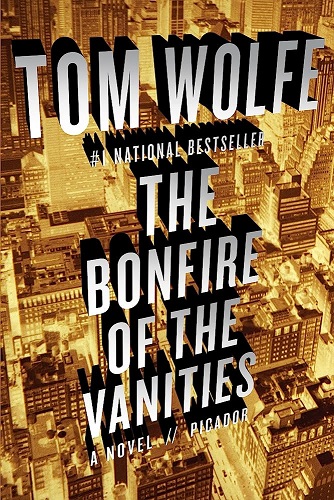When it comes to The Bonfire of Vanities, after watching the movie and then reading the book about the making of the movie, you might as well order a copy of the original 1987 novel by Tom Wolfe and see where it all started.
At nearly 700 pages, The Bonfire of the Vanities is a big book about New York City in the mid-80s. It’s a book about economics, racism, municipal politics, high society, and what happens when one very privileged person loses everything that he felt defined him. As a writer and a satirist, Wolfe’s described the foibles and the mistakes of the book’s large cast of characters with a definite delight. The reader may end up feeling sorry for stockbroker Sherman McCoy after he is arrested and put on trial for the hit-and-run of a young black teenager but, at no point, does Sherman ever become a truly sympathetic character. As a character, Sherman never has the self-awareness necessary to truly confront his own mistakes and attitudes. Reading the original novel, one realizes just how miscast Tom Hanks was when he was cast in the lead role for the film adaptation. There are many ways to describe the aristocratic, arrogant, and ultimately hapless Sherman McCoy, but he is definitely not Tom Hanks.
Of course, Sherman is not the only character to lack self-awareness. There’s really not a shred of self-awareness to found amongst any of the characters. Both Sherman’s mistress and his wife are more concerned with how the trial is going to effect their social lives. District Attorney Abe Weiss sees the prosecution of McCoy as a way to further his own political career. Assistant District Attorney Jed Kramer finds himself obsessed with one the jurors. Sleazy British journalist Peter Fallow amplifies the more sordid aspects of the story and blithely turns Sherman McCoy into the epitome of everything that everyone hates about the wealthy, with the great irony being that Sherman and his social set have patterned their own social style after their idealized view of the British. The Mayor of New York obsesses over every little slight while a collection of detectives and attorneys do their job with blue collar efficiency and a cast of activists and grifters go out of their way to make headlines and to keep New York on the verge of exploding. In the end, there’s only one truly heroic character in the novel and that’s Judge Myron Kovitsky, a loud and profane New Yorker who rules his courtroom like a benign tyrant but who is the only character who truly cares about seeing justice done. In the end, the book suggests that the price of Kovitsky’s honorable stand will be the loss of his career.
(Kovitsky, the most vividly characterized of the many characters in the novel, was also one of the many characters to be changed for the film, becoming Judge Leonard White, the voice-of-God judge played by Morgan Freeman.)
In the end, the main character of the book really is New York City and Wolfe’s mix of love and disdain for the city comes through in every passage, from the detectives casually cursing around the station house to the waiters who efficiently handle the sudden death of a diner in restaurant to the politicians who hate and fear their own constituents. Reportedly, Wolfe said that the novel was about capturing what New York City was like in the 80s and it’s definitely a novel of that era. At the same time, when I read it in 2021, the story still felt relevant. If anything, it was easy for me to picture Sherman McCoy as one of those people who brags about how they would have voted for Obama a third time while, at the same time, protesting the idea of any sort of affordable housing units being built in his neighborhood. It was easy to imagine Fox and MSNBC and CNN all covering every moment of Sherman McCoy’s trial. It was easy to imagine Peter Fallow showing up on TMZ and it was just as easy to imagine all of Fallow’s articles being breathlessly shared on social media. Reading the novel, it was easy to see that the bonfire is still burning.

Pingback: Lisa Marie’s Week In Review: 9/25/23 — 10/1/23 | Through the Shattered Lens